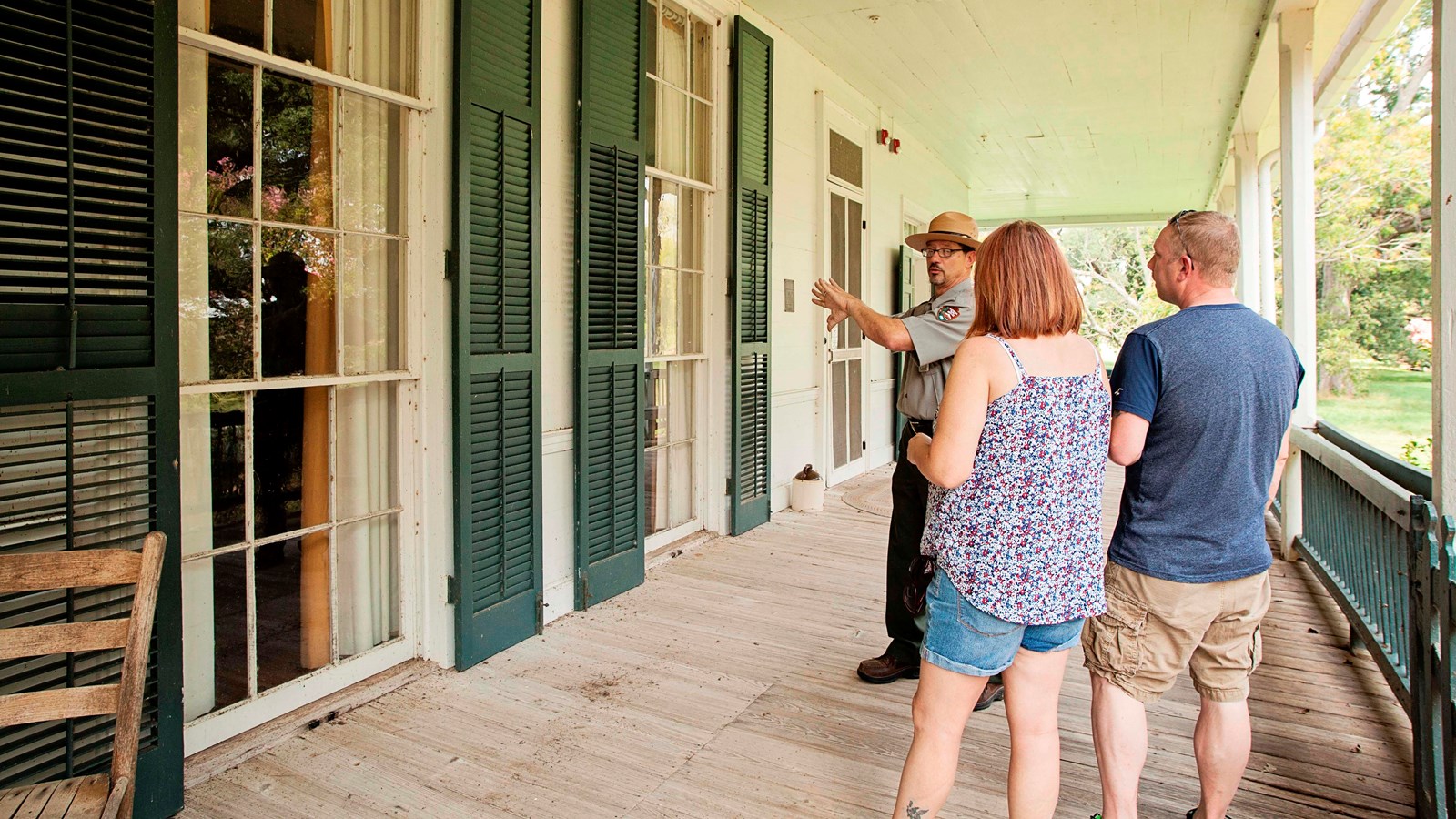Last updated: September 3, 2023
Place
Oakland Main House Gallery

NPS
Quick Facts
Location:
Natchez, Louisiana
Amenities
4 listed
Accessible Rooms, Benches/Seating, Historical/Interpretive Information/Exhibits, Wheelchair Accessible
Jean-Pierre Emanuel Prud’homme acquired this land in a Spanish land grant around 1785 and eight generations of his French Creole family lived in this house from 1821 until 1998. The main house conveyed success but was only a small part of a plantation. Far more important was the work done beyond the main house.
The Prud'hommes were not the only family living on this land. Generations of the same families of laborers, enslaved and tenant, lived on these lands for over two hundred years. The plantation’s first cash crops were tobacco and indigo, followed by cotton in the early 1800s.
According to the Prud'homme family, the house was built entirely of local materials. The enslaved carpenters framed out the raised Creole house in cypress wood, using few, if any, nails. Although most of the carpenters are unidentified, documents record both Dominique Toussaint and Solomon Wilson as enslaved carpenters on the plantation. The walls are bousillage, which is made from mud mixed with Spanish Moss, and straw. Later wooden siding was put over the bousillage.
In 1821, the upper level of house consisted of only four rooms, the parlor, dining room, and two bedrooms surrounded by a wide wrap-around gallery (porch). The original two rooms at ground level were the enslaved nanny’s room and wine cellar. Like many wealthy Cane River plantation owners Emanuel built a town house in Natchitoches and may not have lived on the plantation all year, instead relying on the overseer to manage day-to-day operations.
By the 1940s, the need for manual laborers decreased with the increasing numbers of tractors and other equipment. The plantation and the house appear as it would have looked in the 1960s, around the time that the few remaining tenant farmers left the plantation.
The Prud'hommes were not the only family living on this land. Generations of the same families of laborers, enslaved and tenant, lived on these lands for over two hundred years. The plantation’s first cash crops were tobacco and indigo, followed by cotton in the early 1800s.
According to the Prud'homme family, the house was built entirely of local materials. The enslaved carpenters framed out the raised Creole house in cypress wood, using few, if any, nails. Although most of the carpenters are unidentified, documents record both Dominique Toussaint and Solomon Wilson as enslaved carpenters on the plantation. The walls are bousillage, which is made from mud mixed with Spanish Moss, and straw. Later wooden siding was put over the bousillage.
In 1821, the upper level of house consisted of only four rooms, the parlor, dining room, and two bedrooms surrounded by a wide wrap-around gallery (porch). The original two rooms at ground level were the enslaved nanny’s room and wine cellar. Like many wealthy Cane River plantation owners Emanuel built a town house in Natchitoches and may not have lived on the plantation all year, instead relying on the overseer to manage day-to-day operations.
By the 1940s, the need for manual laborers decreased with the increasing numbers of tractors and other equipment. The plantation and the house appear as it would have looked in the 1960s, around the time that the few remaining tenant farmers left the plantation.
